Bird of the Week: Painted Bunting
This is the kind of jaw-dropping bird that makes you question everything.
Here at Bird of the Week we make no secret of the fact that we find every bird to be the most astonishing, beautiful, improbable, and perfect creature on earth. That remains true and yet, sometimes a bird crosses our desks that make us truly wonder whether all of this—animals, people, the planet, space, time and reality itself—is some kind of dream.
Case in point: the painted bunting. First of all: what! Second of all: how!
Don’t let your eyes deceive you. This bird looks like it was lifted from a psychedelic 17th-century painting or an imaginative children’s book, or like it’s some kind of lawn ornament that really took creative license with the facts of nature, but NO, THIS IS NATURE. How does mother do it, and how does she do it so goddamn well?
A living, breathing, chirping watercolor! Painted buntings are flawless songbirds that are native to North America and are part of the cardinal family. They tend to be shy and secretive, staying hidden in places with dense foliage. Very humble of them to keep their beauty away from the rest of us, where it would be too distracting and make us feel too bad about ourselves to keep living life as usual.
One of the more fascinating aspects of the painted bunting is that there are actually two separate breeding populations of them on the continent—the “eastern” population (breeding on the Atlantic coast and migrating to Florida and the Caribbean) and “western” or “south-central” population (breeding in Texas and migrating to Mexico and Central America). The western population has an extra layer of intrigue in that it begins its annual migration before molting, which is routine among waterfowl but rather rare among songbirds. Basically the Texas chapter of the painted bunting club knows it looks good and doesn’t want to give that up until it must. Fair!
As if being so gorgeous that it makes others question reality wasn’t enough, listen to the pipes on these guys:
Watching it in motion is even crazier, isn’t it??
Now, you don’t get by looking this good and not gaining some nicknames along the way. The painted bunting is commonly referred to as siete colores or “seven colors” in Mexico and nonpareil (“without equal” or “unrivaled” in French) in Louisiana. Again, fair. Even the females (chronically the duller bird sex, aesthetically) are a total stunner:
As you can imagine, painted buntings are highly sought after and have been for years. Way back in 1841, John James Audubon (a friend to animals, but a categorically bad person) reported that a great number of painted buntings were trapped annually, shipped to Europe, and sold for a pretty penny to sit in cages in the homes of the wealthy. Today, they are still illegally caught and sold, even with conservation efforts aimed at stopping such bone-headed practices. That, in combination with loss of habitat, parasites, and climate change, has led to an overall population decline in recent decades.
It’s not all bad news for the painted bunting, though. Quite the contrary: there’s no shortage of great stories about the impeccable species. In 2015, one made its way all the way up to Central Park in New York. And just this year, “Old Man Bunting” became one of the oldest painted buntings ever documented. Arkansas is even toying (unsuccessfully so far) with the idea of making the painted bunting its state bird). We approve.
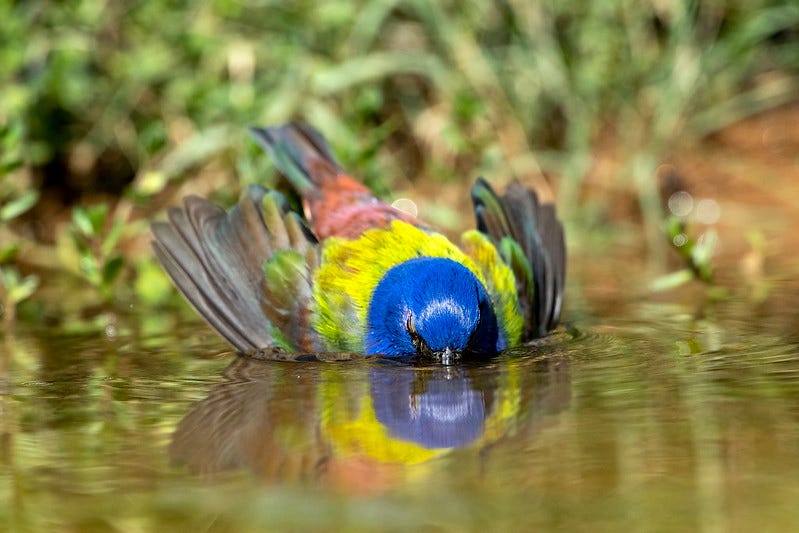
I could go on about this bird but let’s face it, the best way to appreciate the painted bunting is to stare in awe at its beauty, and ask yourself a question rightly posted by the Audubon Society: Why Are Buntings All So Good?
While you ponder that, read Jack’s beautiful ode to the indigo bunting, another avian species that is simply too perfect to process. Birds: How do they do it?? It’s our honor to ask that question in the pages of this blog every week.
Do you have a favorite bird that is simply too beautiful to process? Tell us about it at hello@discourseblog.com. And check out our complete Bird of the Week list here.


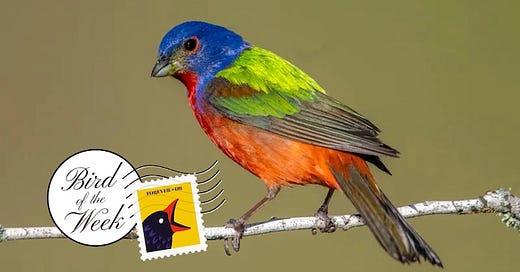




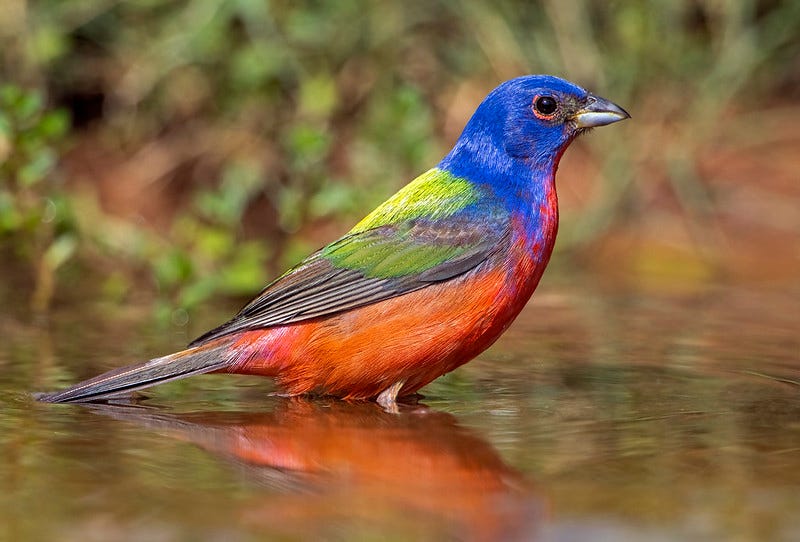
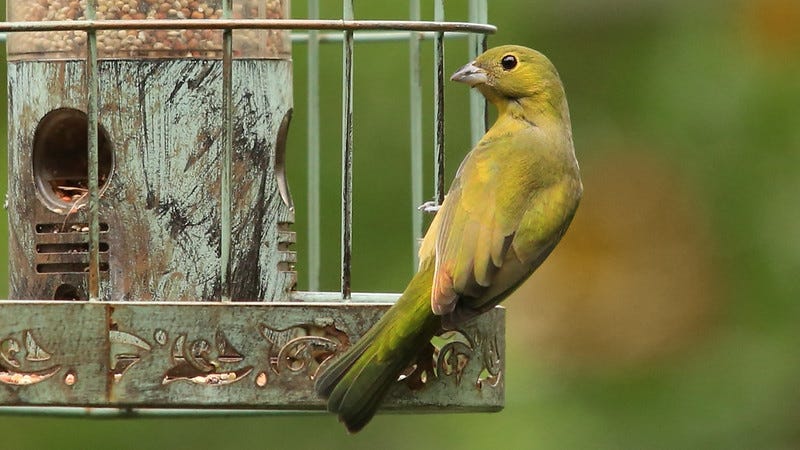
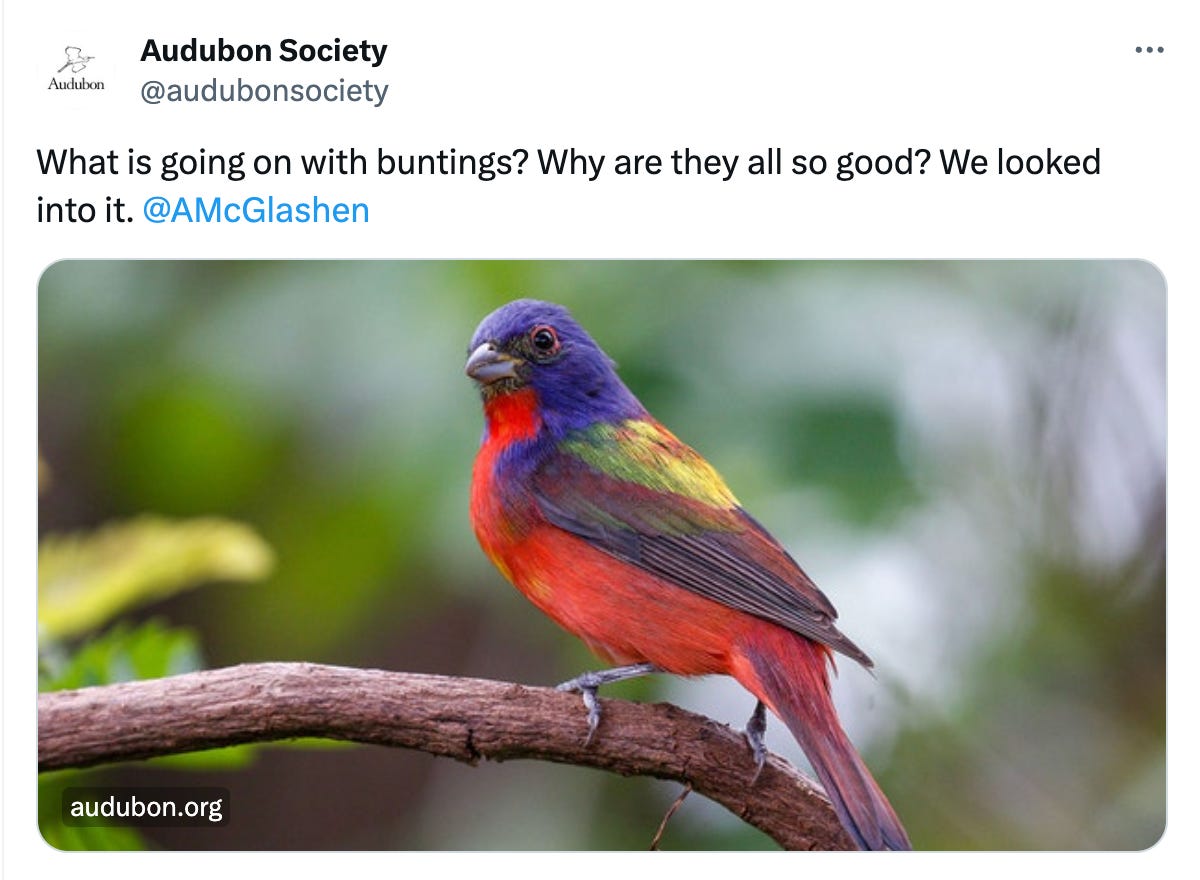
Buntings are very good birds. I have reliably seen indigo buntings in NY and NJ and am delighted every time.
I think I've only ever seen painted buntings in Florida, either in Corkscrew Swamp (there's a set of feeders just outside the visitor center where they regularly show up) or on Merritt Island, where, again, they hang out in the trees right around the visitor center. They are the sort of bird that are so brilliant even the shittiest cellphone photos can convey their goodness.
I get the monthly newsletter of the Maryland Department of Natural Resources. They said that there are breeding pairs of these colorful bastards along the Atlantic Coast this far north now.